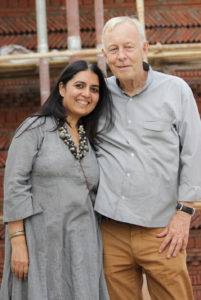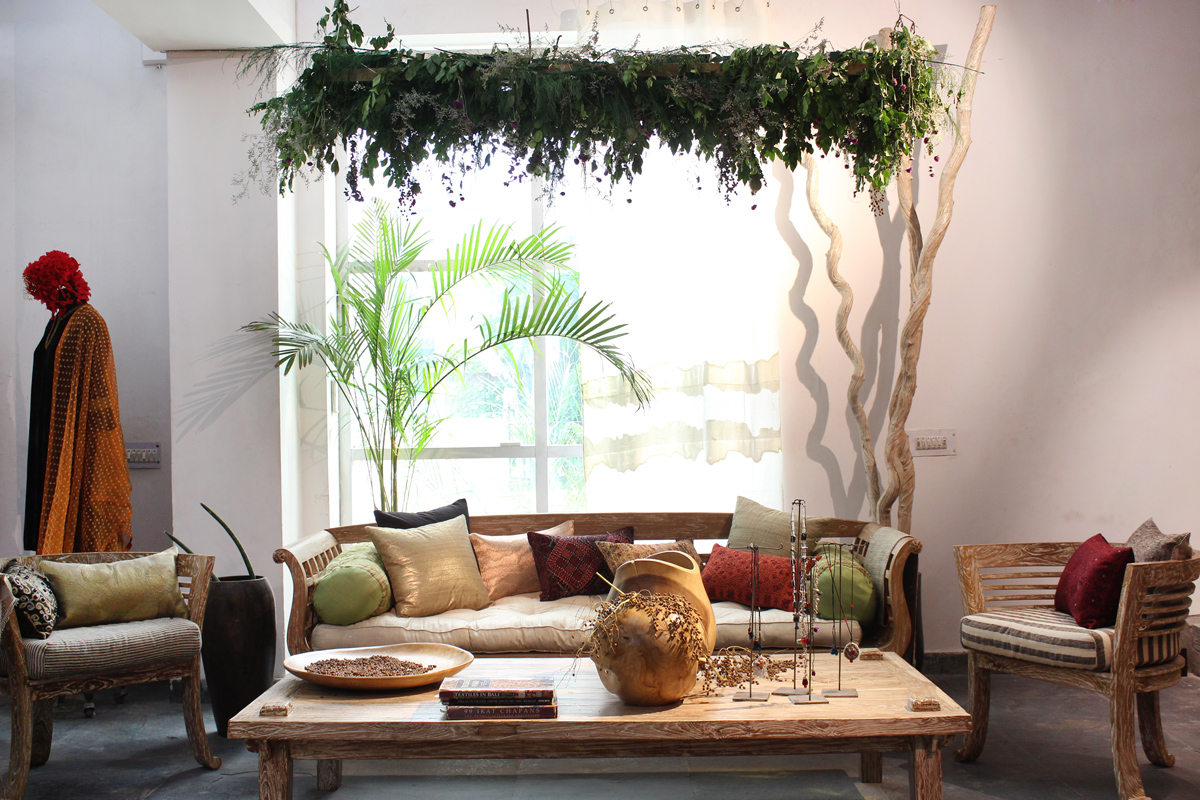A tête-à-tête with the founding partners of “Shades of India”
 Combining the contemporary design with the inspiring workmanship of traditional craft, “Shades of India” is churning the design and fabric industry; with unique styles of texturing of fabrics, the coordination and contrasting of colors, and the inventive, unexpected use of surface treatment. After making numerous marks in the international market, they are now introducing yet another flagship store in the city of Delhi.
Combining the contemporary design with the inspiring workmanship of traditional craft, “Shades of India” is churning the design and fabric industry; with unique styles of texturing of fabrics, the coordination and contrasting of colors, and the inventive, unexpected use of surface treatment. After making numerous marks in the international market, they are now introducing yet another flagship store in the city of Delhi.
Shades of India’s product range includes apparel, fashion, and interior accessories, and home furnishings. In apparel, it launches six collections a year of which the most recent are Cinnamon, Borte, Baiyu and a Collection of Conversations. The Company launches new Home collections twice a year with a range that includes curtains, bed covers, cushions, bed linen, table linen, and napkin ties. All these are designed, sampled and made in-house. It has its own specialized interiors and hospitality divisions working on residential projects and hotels.
PEAKLIFE speaks to Mandeep Nagi, Design Director, and David Housego, founding partner of Shades of India, who share their journey in the world of fabrics and their future plans.
Q. How and where did your journey begin? And which are the significant instances that punctuate this journey of success?
As I remember the year, it was 1995, when David and I were introduced to each other through a common friend. David had then given up his high-profile job in the field of journalism to work on something around Indian textiles which he had developed a passion for. I was already doing textiles and had completed my graduation in the subject. Having gone around the country to source various skills I had developed a design sense and was sure of the textile journey I wished to pursue further. David and I soon realized our common ground and started working on our aspirations, travelling across India to identify the techniques and skills. We started with just on artisan, with the idea of exporting the best out of India and creating designs that were contemporary yet used indigenous skills.
The first milestone which we crossed was when we were chosen to showcase in Maison et Objet, a highly reputed French trade fair. That time it was probably only one other Indian company showcasing there. With our concepts and presentations, we had to really convince them that we were not like any other Indian company and we finally made it! That was our first step towards success. The world has changed, it is different now. After the recession of the late 2000’s, it is much easier to be a part of such high-profile events than it was then.

Q. Tell us about your vision for the future of ‘Shades of India’?
To me, the future is to maintain the expectations and beliefs that people have in us and to continue that for generations. It (Shades of India) should be known as the ‘Mecca of Textiles’ where people really worship the textiles. For me, it’s not about that it’s the most expensive and people should not be able to buy it, it’s not about that all. It’s about the skills, to show what textile can be and how it can be used.
Q. Tell us what you think about the Indian handloom and handicraft industry and your inspirations from it?
I have always felt that when we call ourselves designers, we are actually not. We probably are curators; the real designers are all the artisans. There is so much history and everything is already present here in India– culture and the rich heritage. And we who have travelled around the world met people across the strata and with an eye for such skills and materials, we are meant to pick, choose and tweak it all and repackage it. There is nothing like the Indian handloom and handicrafts industry anywhere else in the world. There is an opportunity and an inspiration in everything we see here. What we can do here, we can’t anywhere else.
Q. After getting international fame, what do you think about the competition with the other brands here in India?
To be honest, so far whatever we have done is a very short time since starting in India; we have got more than we expected in terms of recognition. Everything has been organic with word of mouth and the experience the audience has had with Shades of India. Sometimes it surprises me to know how our customer base is personally attached to the brand. What we are doing is not very complicated and it’s not that we are an international master on silhouettes, but it is amazing to see how our loyal customers are almost addicted to us.

I feel that there is competition, a lot of people are doing fantastic work. In fact, we all get inspired by many Indian designers. So yes, there is competition, yet India is a very small space to fashion. Although sometimes I feel that we are in no competition and I don’t want to be with any. Other brands have their styles and their customers, and we have our own.
Q. What are the highlights of your latest festive collections – the colours, the motifs, the fabrics, and the design philosophy behind them?
The inspiration is Bali. Southeast Asia is also very rich in textiles with beautiful ikats, different types of silks, weaving techniques and vibrant colours. It is all about is how one still appreciates beauty which he sees around the world. The focus of the collection is the colors and how they are treated; the combinations of textures and fabric manipulation that we are already known for and combining them with embroideries and prints taken from Bali. One of the features that we have explored is hand foiling which gives the collection a regal touch.












